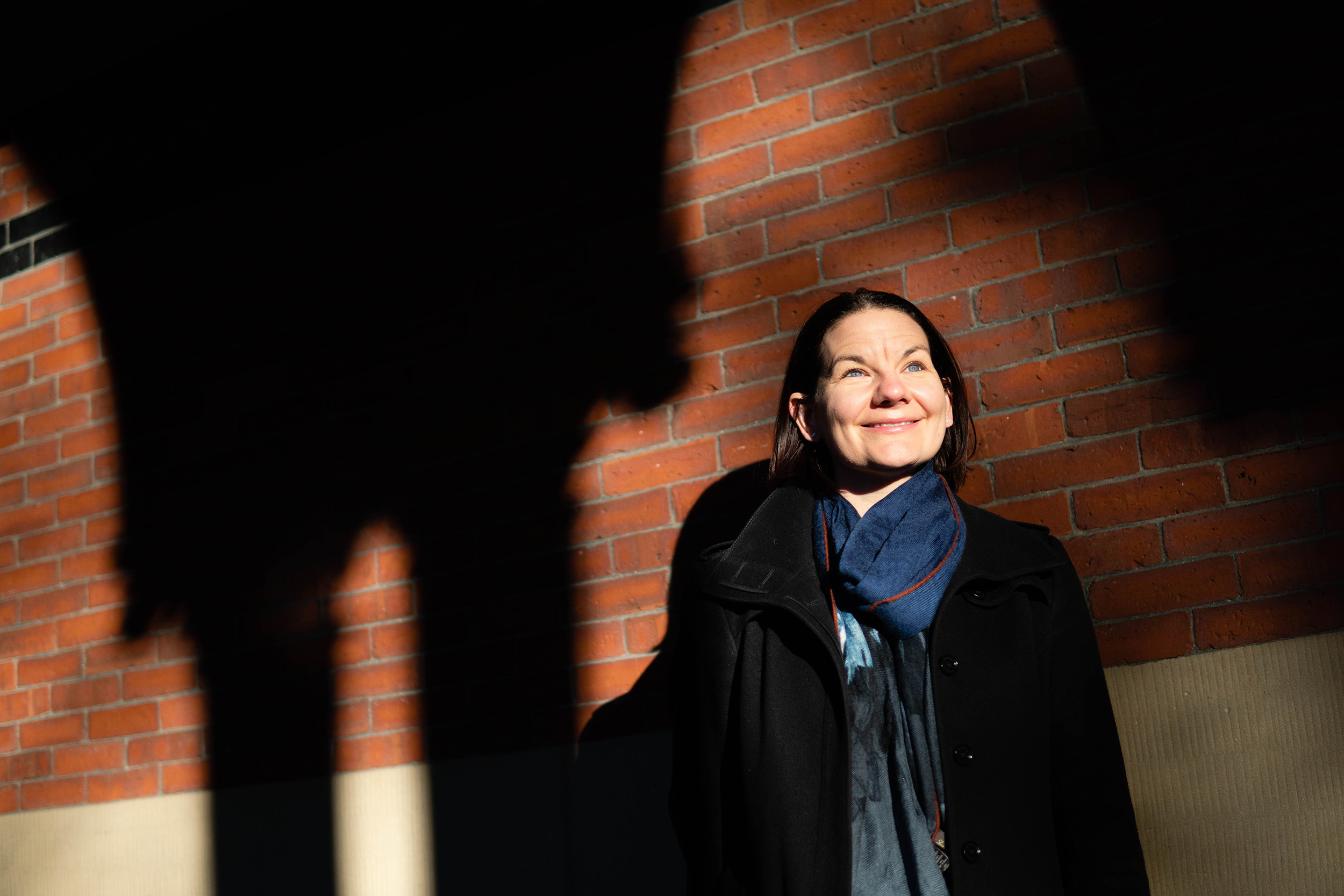
Emily Balskus is only the sixth Harvard scientist to win the Waterman Award since it began in 1975.
Photo by Sophie Park
Emily Balskus wins $1M Waterman Award
Recognized for harnessing chemistry to transform the study of microbial communities
Two plush microbes stare up at everyone who visits Emily Balskus’ office. One, a buttercup yellow, mimics the fuzzy hotdog-shaped E. coli. Another, baker’s yeast or Saccharomyces cerevisiae, is just a white sphere with eyes.
Far larger than living microorganisms (and far cuter), these cuddly counterparts reveal not just Balskus’ research area, but also her admiration for her subjects. Most people fear the trillions of bacteria that live in and on the human body. But for Balskus, these microbes provide potential solutions to vast problems in human health and medicine ranging from drug metabolism to cholesterol management and even cancer.
“Emily Balskus has opened up novel ways to explore and exploit the chemistry and biology of microbes that live in our bodies and how they are linked to our health,” said Sethuraman Panchanathan, director of the National Science Foundation (NSF). “And we’re already seeing the potential impact.”
Today, Panchanathan announced that Balskus is one of two recipients of the Alan T. Waterman Award, the NSF’s most prestigious prize for scientists under 40 in the United States. Balskus is only the sixth Harvard scientist (and the only Harvard woman) to receive a Waterman, which the government has awarded annually since 1975.
“I hope that through receiving this award I can help to bring attention to microbes, the important roles they play in all aspects of our lives, and how chemistry can help us to understand the microbial world,” said Balskus, a professor of chemistry and chemical biology. She credits her research group, past and present, for earning this award. “It means a lot to all of us to know that the scientific community is excited about our discoveries and approach to science.”
To study microbes, Balskus shifted into the biological realm, but her work is still fundamentally chemical. Bacteria perform mysterious chemistry, sometimes forging or dismantling molecules using reactions that lie beyond the skills of today’s best chemists. So, Balskus hunts for microbial genes that produce enzymes, protein-based catalysts that perform chemical reactions, to understand how and why microbes do what they do.
“Despite the important roles these organisms play in all habitats, we know very little about how they influence surrounding environments and organisms,” Balskus said. “We don’t understand the chemistry they perform. For example, 85 percent of genes in the human gut microbiome can’t confidently be linked to a microbial activity.”
But in her latest work, Balskus and her team linked genes in the human microbiome to microbial activity, mapping, in a way, how some members of the human gut might influence their host.
For example, her lab recently discovered how certain microbes break down cholesterol in the human gut. Only some people host these cholesterol-busting bacteria and those who do tend to experience lower levels of blood cholesterol. This finding could lead to new types of treatment to manage high cholesterol levels.
Balskus also discovered that some gut microbes can interfere with drug metabolism, gobbling up L-dopa, for example, before the Parkinson’s treatment can reach the brain and help assuage symptoms of the disease. And, her lab played an important role in discovering how E. coli produce a harmful toxin that damages the digestive system and potentially leads to increased risk of colon cancer.
“Much of our work has focused on elucidating how microbes in this environment are performing chemistry — what are the specific catalysts, or enzymes, that they use to perform chemical transformations that are linked to health or disease,” Balskus said. “With this knowledge, we can more accurately predict the chemistry performed by microbial communities, can begin to study its biological consequences, and can even think about developing tools to control it.”
The Waterman Award, Balskus said, will allow her research team to take on higher-risk projects with potentially greater rewards and pursue creative directions that would have been impossible without NSF support.
But Balskus has more than just scientific ambitions. “I hope that by receiving this award,” she said, “I can inspire women and other individuals who are underrepresented in science as well as gain a platform to highlight the challenges we currently face.” Growing up, all her science teachers were women; because of that, she didn’t hesitate to pursue a career in science.
“The future of human health, of medicine, needs Emily’s research,” said Catherine Drennan, a professor of biology and chemistry at the Massachusetts Institute of Technology and one of Balskus’ collaborators. “I’m a fan of Emily. I’m just really inspired by her. And I want my 11-year-old daughter to look at her and say, ‘yes, women can do anything.’”
Balskus shares the 2020 Waterman Award with John O. Dabiri, an aeronautical engineer at the California Institute of Technology. Due to the COVID-19 pandemic, the NSF postponed the original award ceremony; the agency will present Balskus and Dabiri with their awards, which include a medal and $1 million in research funding over five years, in Washington, D.C., at an unspecified date.






